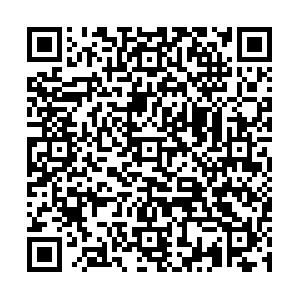The clinical analysis of the treatment of refractory nasal hemorrhage by bipolar electrocoagulation under nasal endoscope
-
摘要: 目的 探讨鼻内镜下双极电凝治疗难治性鼻出血的疗效与安全性,统计难治性鼻出血的常见出血部位、各年龄段性别分布特点。 方法 对2014年11月-2017年12月蚌埠市第三人民医院耳鼻喉科收治的75例难治性鼻出血患者,鼻内镜下一次甚至两次寻找出血点的诊疗过程进行回顾性分析,总结难治性鼻出血的治疗效果,分析并发症的发生情况,统计难治性鼻出血常见出血部位、各年龄段性别分布特点。 结果 鼻内镜下双极电凝治疗难治性鼻出血的治愈率为100%,并发症发生率为2.67%。68例患者在鼻内镜下发现出血点(第一次发现出血点64例),在双极电凝止血后,未再次出血。全部患者为动脉性的单一出血点,大多位于鼻腔隐匿部位,分别为下鼻道(50.67%,38/75),嗅裂鼻中隔面(13.33%,10/75),中鼻道(5.33%,4/75,其中筛泡2例,筛窦前壁1例,上颌窦自然口1例),鼻中隔后端(6.67%,5/75),鼻中隔凹陷(4.00%,3/75),鼻中隔偏曲侧后方(6.67%,5/75),中鼻甲基板、中鼻甲后端、中鼻甲腋部各1例(1.33%,1/75),未找到出血点7例(9.33%,7/75)。7例未发现明显出血点的患者,采用双极电凝方法,处理可疑出血及渗血的黏膜,并鼻腔局部填塞治疗,均未出血。所有患者没有选择蝶腭动脉凝固(结扎)术。鼻出血发病男多于女,40岁以后发病在增加,50岁以后女性发病在增加。 结论 鼻内镜下双极电凝治疗难治性鼻出血疗效好,并发症少,安全性高,符合精准、微创的理念,值得临床推广使用,常见出血部位、各年龄段性别分布特点可指导临床。Abstract: Objective To investigate the efficacy and safety of endoscopic bipolar electrocoagulation in the treatment of refractory epistaxis, and to analyze the common bleeding sites and gender distribution characteristics in all ages of intractable epistaxis. Methods A retrospective analysis was made on the diagnosis and treatment of 75 patients with intractable nasal hemorrhage in our department from November, 2014 to December, 2017 who were looked for blood spots for once or twice under nasal endoscope. The therapeutic effects of endoscopic bipolar electrocoagulation for refractory epistaxis were summarized and the occurrence of complications were analyzed. The common bleeding sites and gender distribution characteristics of various age groups in refractory nosebleeds were counted. The incidence of common bleeding sites and the gender distribution characteristics of various age groups were counted. Results The curative rate of bipolar electrocoagulation for refractory nasal bleeding was 100%. The complication rate was 2.67%. In 68 patients, bleeding was found under nasal endoscope (64 hemorrhages were found for the first time) and no rebleeding occurred after bipolar electrocoagulation. All were single-arterial hemorrhage, mostly located in hidden place of nasal cavity. In turn, the inferior meatus were 50.67% (38/75), the septum surface of olfactory cleft 13.33% (10/75), the middle meatus 5.33% (4/75, screen bubble 2 case, the anterior wall of ethmoid sinus 1 case, the natural mouth in maxillary sinus 1 case), the rear of nasal septum 6.67% (5/75), the sag of nasal septum 4% (3/75), the rear of nasal septum deviation 6.67% (5/75), the methyl plate of middle turbinate and the rear of middle turbinate and the axillary region of middle turbinate each 1.33% (1/75), the bleeder what was not found 9.33% (7/75). The 7 cases with no identifiable bleeding point were treated with bipolar electrocoagulation and local packing treatment with suspicious bleeding and haematic mucosa, and no rebleeding was found. All patients did not choose the coagulation (ligation) of sphenopalatine artery. The incidence of epistaxis is more common in men than in women. The incidence is increasing after the age of 40. The incidence of women is increasing after the age of 50. Conclusion The refractory nose bleed has good curative effect, less complications, high safety, and it is consistent with the concept of precision and minimal invasiveness and is worthy of clinical promotion and use. Common bleeding sites and gender distribution at different ages can guide clinical practice.
-
Key words:
- Refractory nasal bleeding /
- Nasal endoscopy /
- Bipolar coagulation /
- Bleeding part /
- Age /
- Sex
-

 点击查看大图
点击查看大图
计量
- 文章访问数: 205
- HTML全文浏览量: 40
- PDF下载量: 0
- 被引次数: 0



 下载:
下载:
